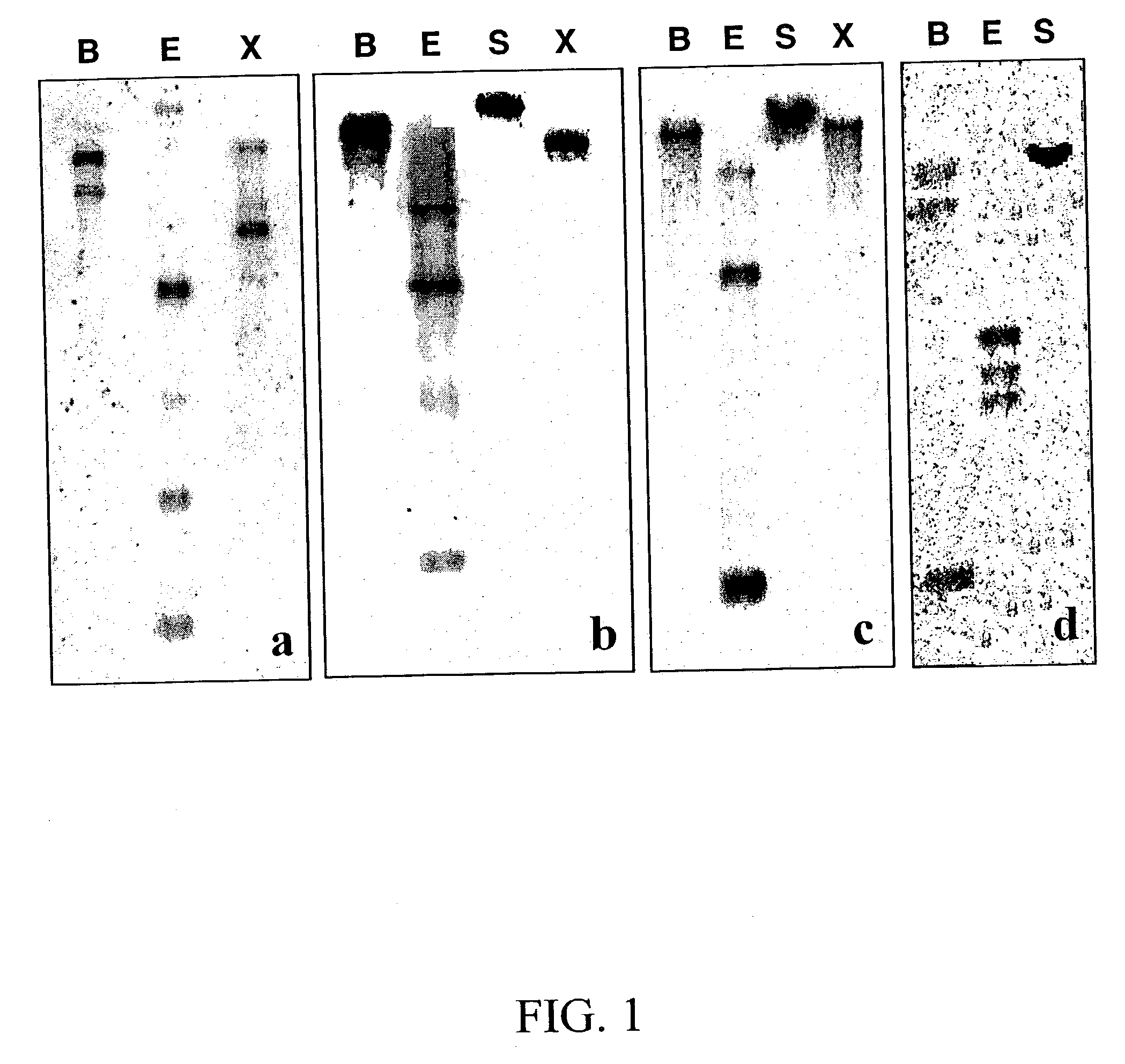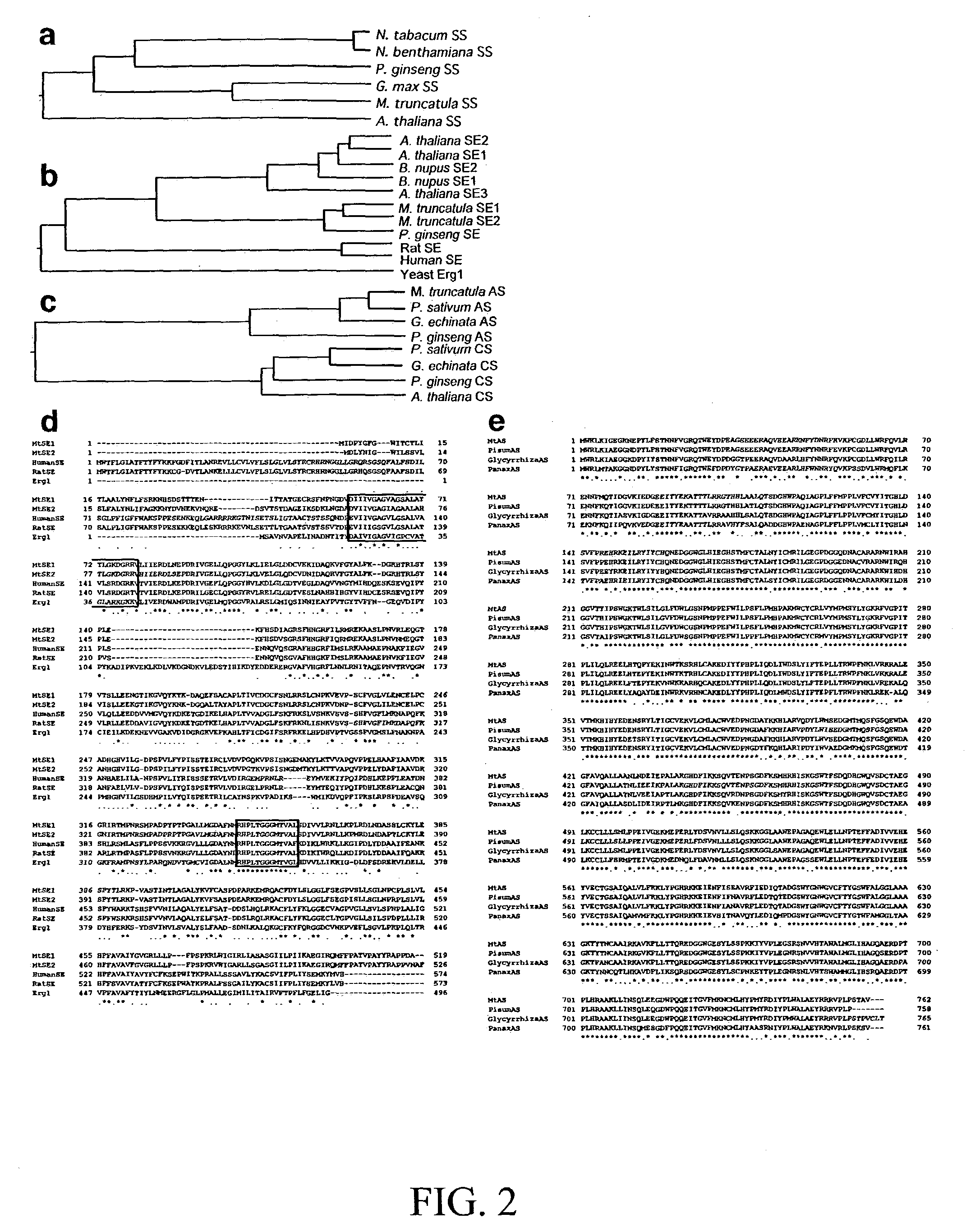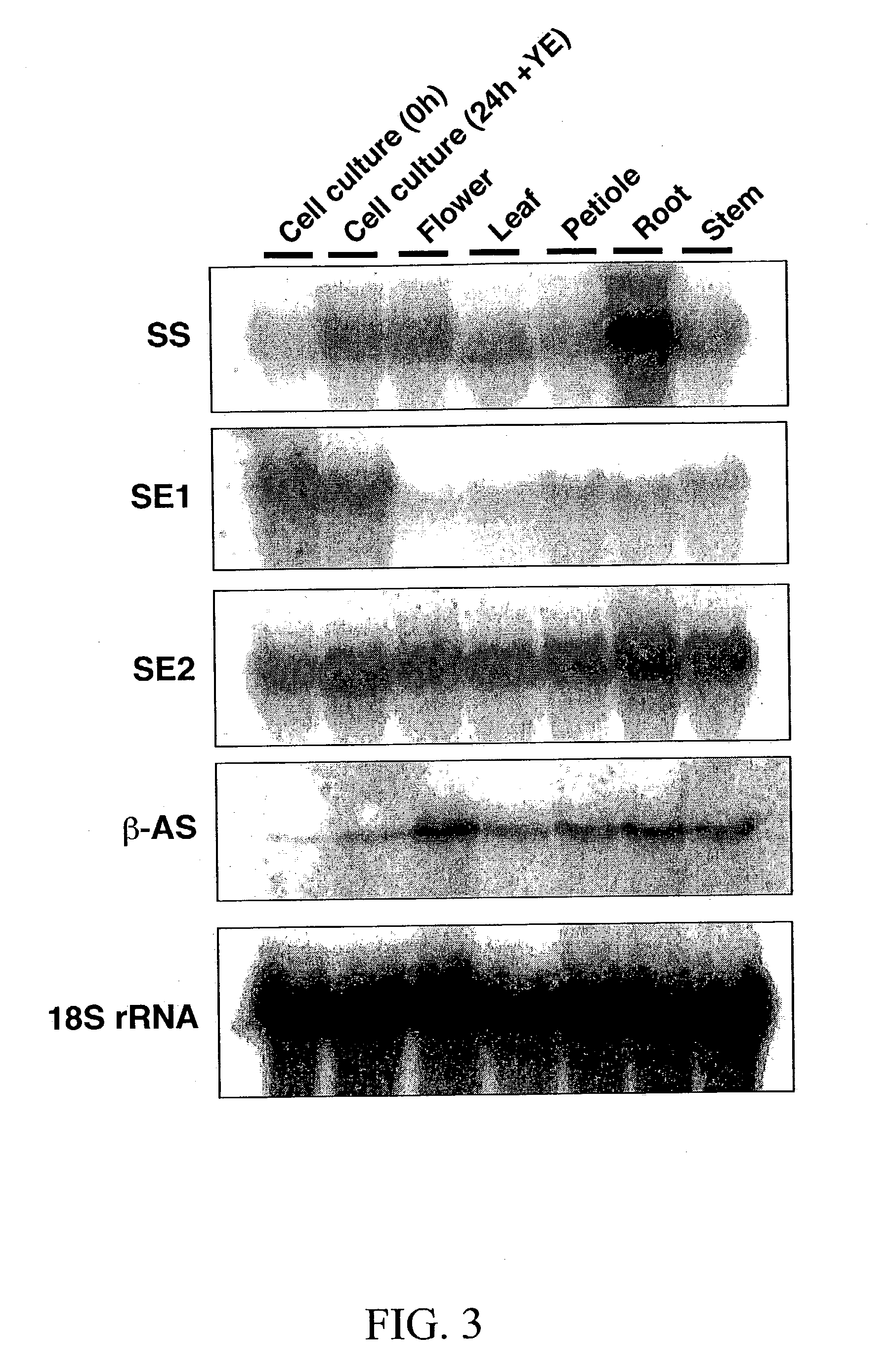Methods of identifying genes for the manipulation of triterpene saponins
a triterpene saponin and gene technology, applied in the field of identifying genes for the manipulation of triterpene saponins, can solve the problems of plant se not being functionally characterized, most of the steps in their biosynthesis remain uncharacterized at the molecular level, and the characterization of genes involved in the biosynthesis of triterpenes is difficul
- Summary
- Abstract
- Description
- Claims
- Application Information
AI Technical Summary
Problems solved by technology
Method used
Image
Examples
example 1
Development of an Inducible Cell Culture System for Functional Genomics Approaches to Identify Further Triterpene Saponin Biosynthetic Genes in Medicago Truncatula
[0196] The reactions of triterpene biosynthesis beyond the initial cyclization step catalyzed by .beta.-AS are complex, and none of the enzymes involved in Medicago has been characterized at the molecular level. In order to use DNA micro- and / or macro-array experiments to discover these enzymes by genomics approaches, it was necessary to develop a system in which the saponin pathway can be rapidly and reproducibly induced from low basal levels.
[0197] Extraction and quantitation of the multiple M. truncatula triterpene saponins is not trivial (Huhman et al., 2002), and is therefore not the best assay method for determining expression of the triterpene pathway. It was thus decided to measure changes in transcript levels by RNA gel blot analysis, using the functionally confirmed Medicago .beta.-AS, SE and SS as probes, in a s...
example 2
Use of Bioinformatic and DNA Array-based Approaches to Identify Novel Saponin Biosynthetic Genes in M. Truncatula--Approach #1
[0203] M. truncatula root cell suspension cultures produce low levels of triterpene saponins and have correspondingly low steady state levels of SS, SE and, particularly .beta.-AS transcripts. In order to overcome this, conditions were determined by the inventors for rapid induction of triterpene biosynthesis in the cultures following exposure to MeJA. Jasmonates are important stress signaling molecules that elicit a wide range of secondary metabolites such as polyamines, coumaryl-conjugates, anthraquinones, naphthoquinones, polysaccharides, terpenoids, alkaloids and phenylpropanoids from different plant origins (Memelink et al., 2001). In Medicago cell suspension cultures, exposure to MeJA down-regulates the flavonoid branch of phenylpropanoid biosynthesis, as assessed by CHS steady state transcript levels, but induces the appearance of glycosides of the tri...
example 3
Use of Bioinformatic and DNA Array-based Approaches to Identify Novel Saponin Biosynthetic Genes in M. Truncatula--Approach #2
[0208] One hundred and twenty eight putative cytochrome P450 (P450) and 164 putative glycosyltransferases (GT) clones from 36 Medicago truncatula EST libraries were spotted in duplicate and evaluated as representative for each TC by macroarray hybridization. cDNA inserts cloned into pBluescript were amplified by PCR of 2 .mu.L of 150-.mu.L resuspended plasmid DNA from overnight bacterial cultures using standard M13F and M13R primers. The quality of each PCR product was examined by gel electrophoresis.
[0209] Approximately 100 ng of each PCR product was spotted in duplicate onto Hybond-N+ membranes (Amersham Pharmacia Biotech). Macroarray analysis was performed in triplicate using three separate RNA preparations, and hybridization was performed with 32P-labeled Medicago truncatula cell culture first strand cDNA probes. Single-stranded probes were synthesized fr...
PUM
| Property | Measurement | Unit |
|---|---|---|
| pH | aaaaa | aaaaa |
| exposure time | aaaaa | aaaaa |
| temperatures | aaaaa | aaaaa |
Abstract
Description
Claims
Application Information
 Login to View More
Login to View More - R&D
- Intellectual Property
- Life Sciences
- Materials
- Tech Scout
- Unparalleled Data Quality
- Higher Quality Content
- 60% Fewer Hallucinations
Browse by: Latest US Patents, China's latest patents, Technical Efficacy Thesaurus, Application Domain, Technology Topic, Popular Technical Reports.
© 2025 PatSnap. All rights reserved.Legal|Privacy policy|Modern Slavery Act Transparency Statement|Sitemap|About US| Contact US: help@patsnap.com



